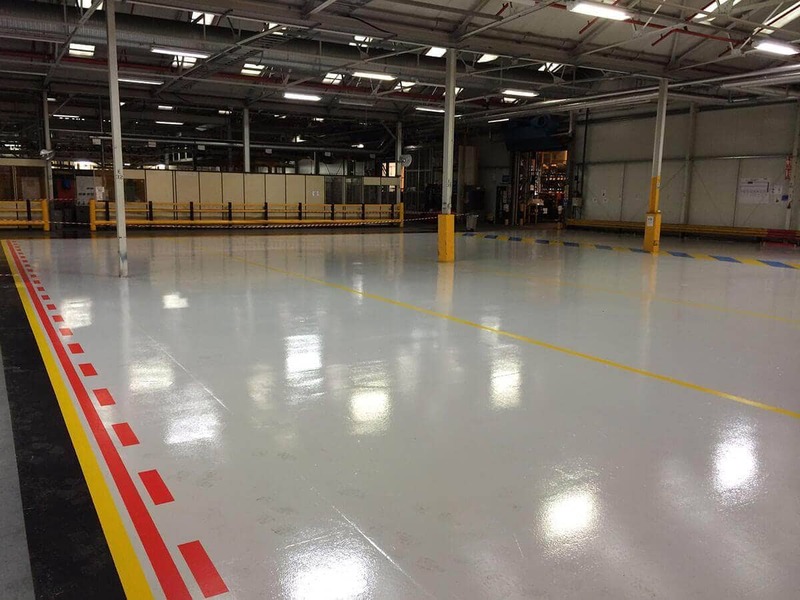
Epoxy 101: Learn Why It’s Crucial to Choose High-Quality Materials
Epoxy is a versatile adhesive substance with applications spanning a multitude of industries, from construction and aerospace to consumer goods and sports equipment. Its unique properties – superior strength, exceptional durability, and outstanding resistance to chemicals and heat – make it a material of choice for tasks demanding reliable bonding, sealing, or coating.
However, as with any material, the quality of the epoxy chosen directly impacts its effectiveness and longevity. This article will explore why choosing high-quality epoxy materials is crucial and how to distinguish superior products.
Why High-Quality Epoxy Matters
Ensured Durability and Strength
Choosing high-quality epoxy guarantees long-lasting strength and durability. The bonding power of premium-grade epoxies, coupled with their resistance to wear and tear, assures their ability to stand the test of time. Inferior quality epoxies may initially seem to perform just as well, but they often deteriorate faster, compromising the integrity of the bonded materials.
Resilience to Harsh Conditions
High-quality epoxy boasts unparalleled resilience to harsh environmental conditions. Its resistance to water, heat, and various chemicals is superior, which makes it ideal for projects exposed to extreme conditions. Lower-quality epoxy may not offer the same degree of resilience, leading to degradation and failure when subjected to adverse conditions.
Better Aesthetic Outcome
High-quality epoxy often results in a more desirable aesthetic outcome. It can provide a glossy, smooth finish that enhances the visual appeal of the completed project. On the other hand, lower-quality materials might result in a dull or uneven finish, undermining the aesthetics of the project.
Recognizing High-Quality Epoxy
Understanding what differentiates high-quality epoxy from substandard ones is key to choosing the best product for your project.
Transparent Information
Transparent, comprehensive information regarding the product is a sign of high-quality epoxy. Reputable manufacturers provide detailed specifications, including the product’s strength, heat resistance, cure time, and shelf life. They also provide safety information, usage instructions, and storage recommendations.
Certifications and Standards Compliance
High-quality epoxy complies with recognized industry standards and often carries certifications from relevant bodies. These include ISO certifications, compliance with REACH (Registration, Evaluation, Authorization, and Restriction of Chemicals) regulations and adherence to RoHS (Restriction of Hazardous Substances) standards.
Consistent Performance
Premium epoxy materials offer consistent performance, irrespective of the scale of the project. They exhibit uniform bonding and curing properties and maintain their performance characteristics over time. Variations in performance are signs of lower-quality materials.
Brand Reputation
A manufacturer’s reputation often reflects the quality of their products. Reputable brands that have stood the test of time are more likely to produce high-quality epoxy. Customer reviews and professional recommendations are useful in gauging a brand’s reputation.
The Risks of Low-Quality Epoxy
Making the decision to use low-quality epoxy comes with significant risks that can affect the overall outcome of a project. Here are some of the most important considerations to keep in mind.
Compromised Structural Integrity
Perhaps the most significant risk associated with using low-quality epoxy is the potential compromise in structural integrity. Inferior epoxy may not offer the same level of bonding strength as high-quality alternatives, leading to weaker joints or connections. This can result in lower overall durability and could even make the final product unsafe, depending on the application.
Early Deterioration
Low-quality epoxy materials are often less resistant to environmental factors such as heat, water, and chemicals. This means they can start to break down or deteriorate sooner than expected, reducing the project’s lifespan. Repairs or replacements could be needed sooner, increasing the total cost.
Unpredictable Curing
Low-quality epoxy can exhibit inconsistent curing times and behaviors. This unpredictability can be particularly problematic when dealing with larger or more complex projects, where consistent cure times are crucial for success.
Unsatisfactory Finish
Another significant risk associated with using low-quality epoxy is the potential for an unsatisfactory finish. High-quality epoxy tends to dry transparent and glossy, while lower-quality options might dry opaque, cloudy, or with a rough texture. This could undermine the aesthetics of the final product and may require additional work to rectify.
Making the Right Choice
While cutting corners and opting for lower-cost, lower-quality epoxy might be tempting, it’s essential to consider the long-term implications. The strength, durability, and resilience offered by high-quality epoxy, combined with a superior aesthetic outcome, can outweigh any initial cost difference.
By knowing what to look for and understanding why quality matters, you can make an informed choice that ensures the success of your project and its longevity. Always remember the quality of your output is only as good as the quality of the materials you put into it. Choosing high-quality epoxy is an investment in the longevity and durability of your work.
Key Takeaways
- The Quality of Epoxy Matters: High-quality epoxy ensures durability, strength, resilience to harsh conditions, and a superior aesthetic finish, which can substantially influence the success and longevity of a project.
- Identifying High-Quality Epoxy: Factors such as transparent product information, certifications and standards compliance, consistent performance, and the manufacturer’s reputation can indicate high-quality epoxy.
- The Risks of Low-Quality Epoxy: Using inferior epoxy can compromise structural integrity, lead to early deterioration, cause unpredictable curing, result in an unsatisfactory finish, and even increase health and safety hazards.
- Long-Term Implications: While low-quality epoxy may initially appear cost-effective, the long-term implications, such as the need for repairs or replacements and potential safety risks, can lead to higher overall costs.
- Investment in Quality: Choosing high-quality epoxy is an investment in your project’s success, safety, and durability. Your output is only as good as the quality of your materials.
